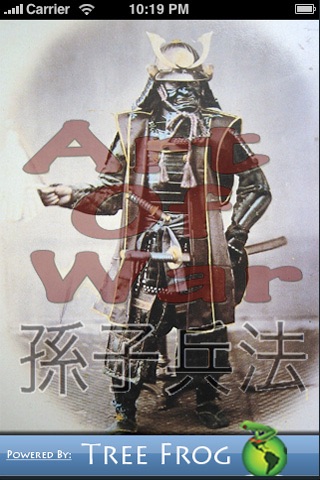
We have fixed formatting issues and are re-introducing Art Of War For Free with the bug fixes.
Please enjoy this timeless book, that can help with business and managerial strategies.
The Art of War (Chinese: 孫子兵法; pinyin: Sūn Zǐ Bīng Fǎ) is a Chinese military treatise that was written during the 6th century BC by Sun Tzu. Composed of 13 chapters, each of which is devoted to one aspect of warfare, it has long been praised as the definitive work on military strategies and tactics of its time.
The book was first translated into the French language in 1782 by French Jesuit Jean Joseph Marie Amiot, and had possibly influenced Napoleon, and even the planning of Operation Desert Storm. Leaders as diverse as Mao Zedong, General Vo Nguyen Giap, and General Douglas MacArthur have claimed to have drawn inspiration from the work.
The Art of War has also been applied to business and managerial strategies.
Chapter summary
1. Laying Plans explores the five key elements that define competitive position (mission, climate, ground, leadership, and methods) and how to evaluate your competitive strengths against your competition.
2. Waging War explains how to understand the economic nature of competition and how success requires making the winning play, which in turn, requires limiting the cost of competition and conflict.
3. Attack by Stratagem defines the source of strength as unity, not size, and the five ingredients that you need to succeed in any competitive situation.
4. Tactical Dispositions explains the importance of defending existing positions until you can advance them and how you must recognize opportunities, not try to create them.
5. Energy explains the use of creativity and timing in building your competitive momentum.
6. Weak Points & Strong explains how your opportunities come from the openings in the environment caused by the relative weakness of your competitors in a given area.
7. Maneuvering explains the dangers of direct conflict and how to win those confrontations when they are forced upon you.
8. Variation in Tactics focuses on the need for flexibility in your responses. It explains how to respond to shifting circumstances successfully.
9. The Army on the March describes the different situations in which you find yourselves as you move into new competitive arenas and how to respond to them. Much of it focuses on evaluating the intentions of others.
10. Terrain looks at the three general areas of resistance (distance, dangers, and barriers) and the six types of ground positions that arise from them. Each of these six field positions offer certain advantages and disadvantages.
11. The Nine Situations describe nine common situations (or stages) in a competitive campaign, from scattering to deadly, and the specific focus you need to successfully navigate each of them.
12. The Attack by Fire explains the use of weapons generally and the use of the environment as a weapon specifically. It examines the five targets for attack, the five types of environmental attack, and the appropriate responses to such attack.
13. The Use of Spies focuses on the importance of developing good information sources, specifically the five types of sources and how to manage them.
http://en.wikipedia.org/wiki/The_Art_of_War



